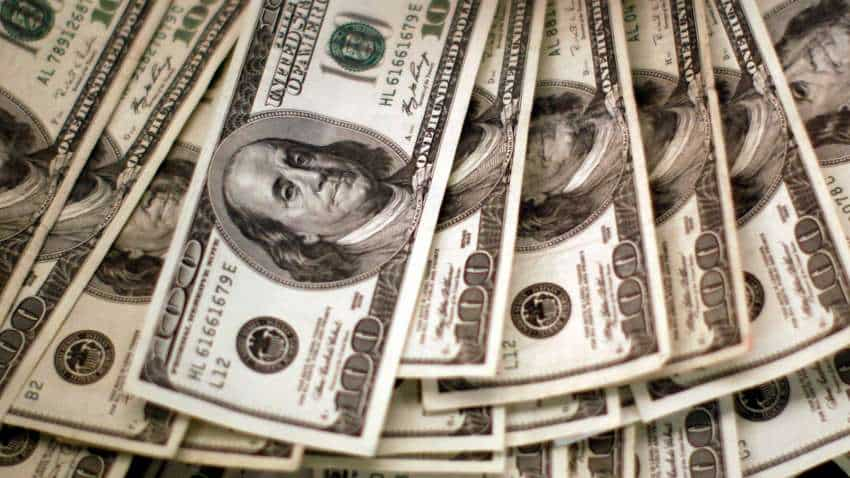Dollar index dips as job openings fall, US Fed meeting in focus
The dollar index fell 0.22% to 101.93 after earlier reaching 102.40, the highest since April 11. The euro rose 0.23% against the greenback to $1.1001, after earlier dipping to $1.0940, the lowest since April 21.

The dollar fell Tuesday after data showed that U.S. job openings fell in March, a day before the Federal Reserve is expected to hike interest rates by an additional 25 basis points.
U.S. job openings fell for a third straight month and layoffs increased to the highest level in more than two years, suggesting some softening in the labor market that could aid the Fed's fight against inflation.
The U.S. Commerce Department also said that factory orders rose by 0.9% in March, below expectations for a 1.1% gain.
The data comes as investors try to gauge whether the Fed is likely to pause rate hikes when it concludes a two-day meeting on Wednesday, or if further increases are possible if inflation remains high.
“The big question is does the Fed signal that policy is restrictive enough, or provide enough hints for the market to think that we’re not going to require the further tightening of policy,” said Edward Moya, senior market analyst at OANDA in New York.
The dollar index fell 0.22% to 101.93 after earlier reaching 102.40, the highest since April 11. The euro rose 0.23% against the greenback to $1.1001, after earlier dipping to $1.0940, the lowest since April 21.
The single currency fell after data showed that euro zone banks are turning off the credit taps and a key gauge of inflation is finally falling, boosting the case for a smaller rate increase by the European Central Bank on Thursday.
The ECB has been seen as possibly hiking rates by 50 basis points this week. The single currency has risen since mid-March on expectations that the interest rate differential with the U.S. dollar will continue to shrink.
"The expected forward US rate advantage versus the euro is the lowest in 10 years," Steve Englander, head, global G10 FX research and North America macro strategy at Standard Chartered Bank said in a note. And "euro-area equities are experiencing the most extended outperformance versus US equities in a decade."
The Aussie dollar rose 0.51% to $0.6664, after earlier getting to $0.6717, the highest since April 21.
The currency jumped against the dollar after the Reserve Bank of Australia (RBA) unexpectedly lifted the cash rate to 3.85% and said further tightening may be required to ensure that inflation returns to target in a reasonable time frame.
"I would think the RBA now thinks they need to see a 4 in front of the cash rate before thinking they might be done," said Ray Attrill, head of FX strategy at National Australia Bank.
"Certainly, the data flow since April has been on the strong side," he added. "It's very probable that another one is to come, though whether it's as soon as June remains to be seen."
The yen gained, reversing earlier losses after last week's Bank of Japan decision to maintain ultra-low interest rates.
The dollar fell 0.56% to 136.67 yen, after earlier hitting 137.78, the highest since March 8.
Get Latest Business News, Stock Market Updates and Videos; Check your tax outgo through Income Tax Calculator and save money through our Personal Finance coverage. Check Business Breaking News Live on Zee Business Twitter and Facebook. Subscribe on YouTube.
RECOMMENDED STORIES

Rs 3,500 Monthly SIP for 35 years vs Rs 35,000 Monthly SIP for 16 Years: Which can give you higher corpus in long term? See calculations

Looking for short term investment ideas? Analysts suggest buying these 2 stocks for potential gain; check targets
06:23 AM IST









 Currency Update: Rupee settles flat at 83.96 against US dollar
Currency Update: Rupee settles flat at 83.96 against US dollar Rupee appreciates 8 paise to 83.37 against US dollar in early trade
Rupee appreciates 8 paise to 83.37 against US dollar in early trade Rupee falls 10 paise to settle at 83.48 against US dollar
Rupee falls 10 paise to settle at 83.48 against US dollar Dollar eases as Fed clues awaited; bitcoin hits 2-year high
Dollar eases as Fed clues awaited; bitcoin hits 2-year high Dollar steady as traders weigh economic data, yen fragile
Dollar steady as traders weigh economic data, yen fragile